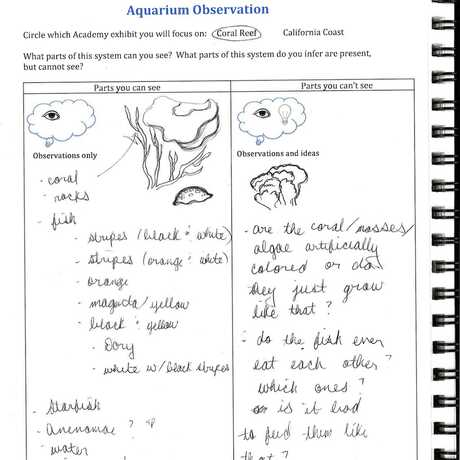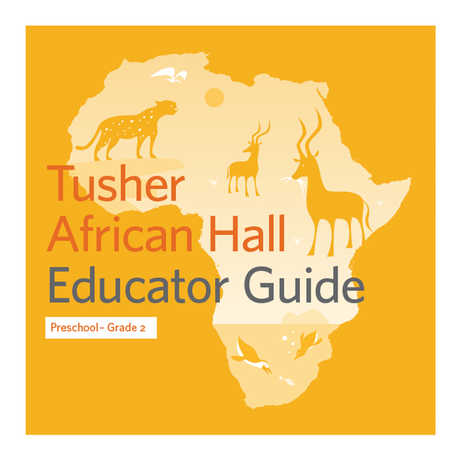
© Adam Fagen
0
Before your students explore Tusher African Hall, prepare them with fun games to practice their observation skills. By observing details carefully, they will discover dioramas displaying naturalistic scenes and consider what it may be like to survive in each environment.
Objectives
These games prepare students for observation activities conducted in the gallery. Students will:
- practice looking carefully to observe details.
- become familiar with dioramas as a method for displaying naturalistic scenes.
Materials
- random classroom objects
- any detailed posters or overheads
- Guiding Questions and Focused Activities reference sheets (1 per chaperone)
Before Your Academy Visit
- Explain to your students that the class field trip to the California Academy of Sciences will include a visit to African Hall. In this exhibit, scientists have arranged preserved, stuffed animals in life-size displays representing scenes from habitats in Africa (dioramas). To build a realistic scene, scientists needed to design the display based on evidence collected from observing the natural world.
- Ask students whether they believe they have the sharp observation skills necessary to work as a professional scientist. Are they sure? Can they remember what they observe? Can they spot details? Can they detect patterns?
- CHALLENGE 1: SNAPSHOT. Hold any classroom object in plain sight. Give students 3 seconds to take a quick look, and then hide the object. Ask students to form an image of the object in their mind. What parts can they remember clearly, and what parts are a little fuzzy? Can they recall color, texture, shape, size? Give the class another quick peek to fill in details. Repeat until students have a clear mental impression.
- CHALLENGE 2: STARE. Hang or project a large image at the front of the class. Give students 30 seconds to remember everything they can about the scene. When time is up, cover the scene, and pose specific questions to be answered orally (e.g. How many flowers were in the vase? What color is the man’s hat? Is the figure holding up it’s right or left arm? What words were written?). Uncover the image and check answers. Now that the students realize the importance of focused observations, repeat the exercise with another image, and ask appropriate questions.
- CHALLENGE 3: MYSTERY SIMILARITY. Circle the students around a table of classroom objects. Select two objects that have some trait in common (e.g. both are brown, made of cloth, have pointy edges), and ask students to deduce the trait – not by naming characteristics, but by proposing other objects to add to the group. Accept or reject these proposals until someone determines the shared characteristic. Repeat the game, having a student choose a mystery similarity and announce two example objects.
At the Academy
Preparation
Browse the Guiding Questions and Focused Activities list, and print out copies of your favorites for chaperones to help lead with student groups.
Procedure
- Divide the class into smaller groups to participate in activities in front of the dioramas. The width of a single display averages 20 ft, and the gallery has a wide plaza in the center, so standing room is ample.
- Have chaperones rotate their groups among displays, conducting activities as appropriate for the diorama, keeping student interest level in mind.
- Before you leave the gallery, have students close their eyes and think of one thing they never would have noticed if they hadn’t played the observation games. Have students share with the groups, or if time is running short, with a neighbor.
- Ask students: is it important that observations are accurate? Why or why not?
References
McDermott, Melora. (1985). Extending Connections: A Handbook of Touring Techniques. Oakland, California: Oakland Museum Docent Council.
Appropriate for: Kindergarten - 5th Grade
Standards for: 1st Grade, 2nd Grade, 3rd Grade
Prep Time: 30 minutes
Activity Time: 20 minutes
Subjects: Life Science, Planning Investigations, Scavenger Hunts
Exhibits: African Hall


